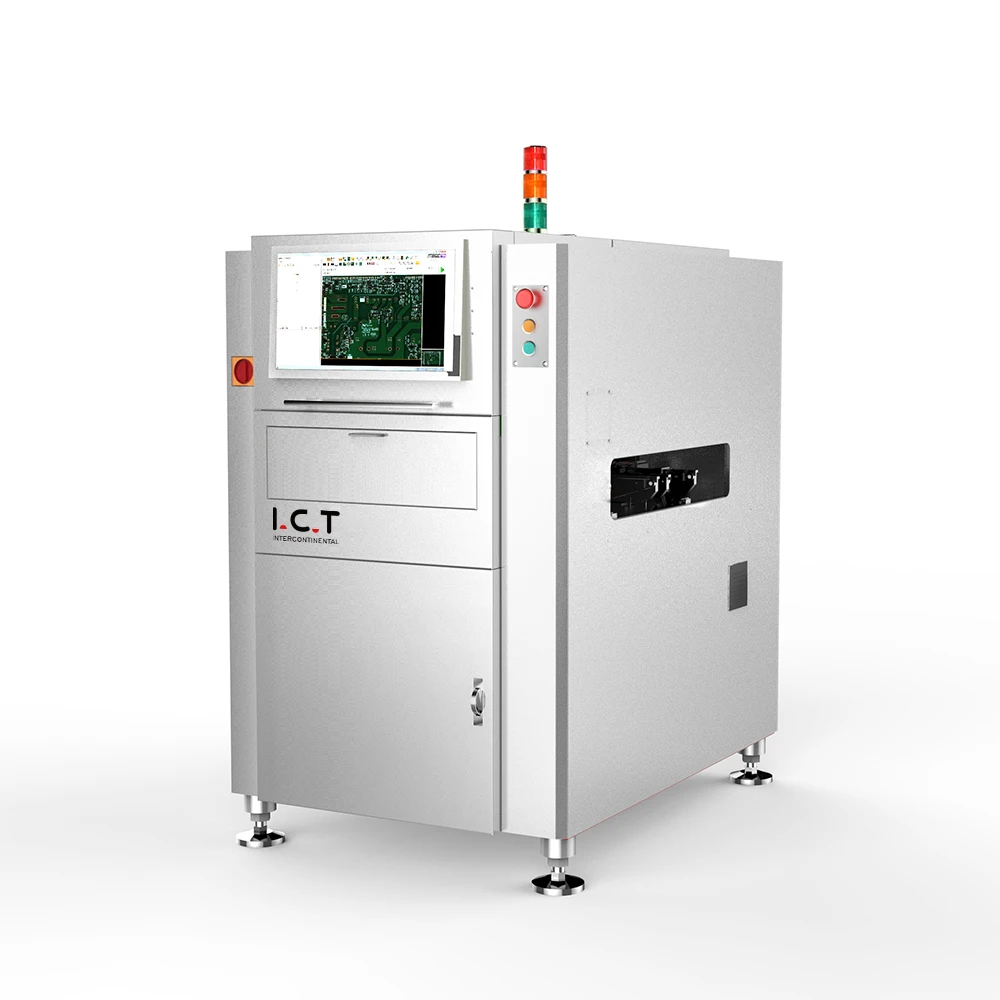
3D AOI Technology
The call for more stringent standards for surface mount devices and the need to identify defects of 1-10 ppm or less to improve yield, process control, and quality assurance, led to the development of 3D automated optical inspection (AOI). 3D AOI enables precise inspection and measurement of the height dimension of devices on the PCB and provides clear side-view images of ICs and various devices. This gives the ability to see leads and solder joints that were not visible with just a top-down camera. 3D AOI inspects QFNs, J-leads, and connectors, and enables the detection of the most difficult defects, such as lifted leads, tombstones, reverses, and height variations.
Just as with 2D AOI, Saki has been in the forefront of 3D AOI development. Saki has now introduced its 3rd generation AOI systems. These flexible and adaptable, high-quality, cost-effective systems can be used for simple verification to full algorithm-based measurements.
Saki’s new positioning system improves yield and cycle time
Speed is an important criterion for AOI, especially in high volume manufacturing of consumer products. Saki’s engineers developed a new positioning system that improves positioning speed by 50% and overall cycle time by 15%. The system can be configured with dual lanes that double throughput or for XL (686 x 870mm: 27 x 34.3 in.) size boards.
Lighting and optics
Saki’s innovative AOI systems consist of an optical head, side-angle cameras showing side views that previously weren’t visible, 4-stage ring lighting that consists of RGB step lighting plus an in-line illumination source that incorporates the light into the optical train of the machine vision lens for optimum illumination and better visual image capture for all PCB configurations. Saki's unique Phase Measurement Profilometry technology provides the 3rd dimension of the Z axis, using wavelength programmable and projected stripe patterns to precisely determine the height of features on the PCB. Circular lighting gives more consistent illumination throughout the field of view, with brightness controlled and shadows eliminated no matter the component height or density.

True height measurement
Saki’s systems don’t just inspect, they measure components with a height range between 0 and 20mm, achieving 1-micron height resolution and a false call rate of less than 100 ppm with 0 escapes for the highest level of quality and accuracy in the industry. Measurement results are evaluated in real time and combined to automatically generate a height map. Real measurement data can be obtained even inside a shield case or between connectors. True height measurement enables actual verification of defects and gives greater inspection, measurement, and reliability than 2D AOI.
Substrate surface correction
Reliability of height data greatly depends on accurate measurements of the substrate surface. Saki’s 3D-AOI machines utilize warpage reference measurements from various locations throughout the board to automatically measure and correct for substrate warpage. Using this approach, accurate height measurement is possible without being influenced by the layout of adjacent parts, even when library data based on imported CAD data is added to the substrate. A correction is performed in all three directions -- X, Y, and Z -- so that the inspection data and the image automatically match.
Seamless image capture of the entire circuit board

One factor that differentiates Saki is the proprietary capability to capture large field-of-view images and automatically combine them into one continuous, seamless data image for accurate and precise programming and positioning. CAD data can be easily entered. Since large areas are inspected in a single field-of-view (FOV), the system automatically detects the surface of the sample and sets height zero reference points for each area block. Users can generate and manage their inspection data without concern for any additional adjustment for FOV joints.
ECD (Extra Component Detection)
Saki's ECD (Extra Component Detection) algorithm inspects for stray components, solder balls, and foreign materials across the entire surface of the circuit board and can detect objects of 300 microns or less, thereby eliminating these defects. ECD provides further assurance of product quality. Saki's ECD is incorporated into both its 2D and 3D AOI systems.

Saki’s proprietary, easy-to-use and program software enables programming and debugging off-line and the unique ability to make program corrections in real time. Saki’s BF2 software allows a user to create inspection logic flexibility by combining 3D and 2D on top of existing Saki standard inspection logic to deal with new components and new failures in lines. Saki’s latest hardware realizes a further optimization of takt time by employing high-speed gantry and GPU calculations for an even faster scanning system.
Saki's 3D AOI systems also employ the benefits of its 2D AOI system, using 2D capabilities for inspecting markings on the top of the board. This technology provides optical character recognition (OCR) and Saki's optical character verification (OCV) capabilities, which are not found in other 3D AOI systems.
SMT AOI Machine, Offline AOI Machine, Inline AOI Machine, SMT X Ray Machine, SMT SPI Machine, 3D SPI Machine, 3D AOI Machine, SMT AOI SPI Machine.
More information please contact us for more information: WhatsApp/ Skype / WeChat: +86-13670124230,Email: etasmt@foxmail.com










